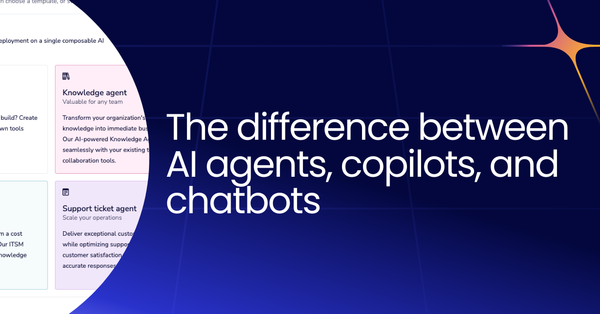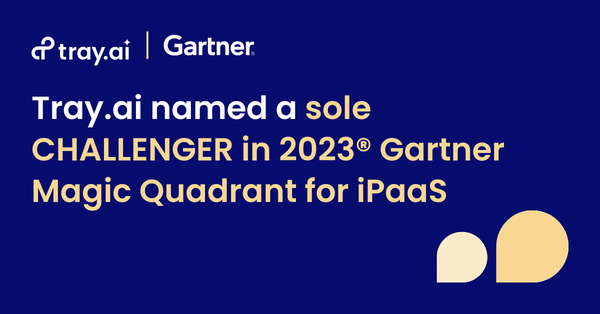Integration technical debt is a silent productivity killer. It crushes IT agility, drives up costs, and creates security risks. CIOs report having to divert 10 - 20% of their IT budget to addressing technical debt.
According to Gartner, organizations struggling with technical debt face slower performance, inability to scale, and compromised security due to shortcuts and poor design choices in their integration processes.
As a consequence, IT teams are stuck in continuous maintenance mode—a time and revenue vacuum that consistently pushes more innovative and impactful projects off the table. As the expenses related to maintaining current systems increase, the systems themselves grow less stable and less adaptable. Eventually, your integration technical debt reaches a level where you can no longer ignore it and are forced to deal with it.
So how do you do that? Let’s discuss the current landscape of technical debt, learn from organizations who have navigated these waters before, and find out how they reduced their technical debt the modern way.
The current landscape of integration technical debt
Integration technical debt refers to the costs and challenges that accumulate when quick fixes and suboptimal integration solutions are implemented. Here’s how it happens:
Your app ecosystem is increasingly complex—with the average enterprise using over 1000 different applications and tech stacks growing by 25% over the past 5 years. When the integrations holding it together are a mish-mash of custom code, native integrations, and legacy integration solutions, keeping the house of cards together becomes IT’s full-time responsibility. The excessive coding and maintenance requirements for each integration extend project timelines, holding IT hostage from focusing on both strategic and essential business processes.
As a result, Gartner outlines three main consequences of integration technical debt:
- Reduced agility – If your integration layer is difficult to monitor, maintain, and modify, the teams responsible will be slow to respond to business needs when deploying new capabilities. They will have to spend valuable time and resources on understanding the impact of changes, which slows down the business's ability to onboard new applications and quickly deliver new features.
- High opportunity costs – When IT spends time fixing bugs, refactoring code, or addressing performance issues to maintain integration between applications, it diverts valuable resources from more innovative or proactive tasks. This not only slows down the delivery of new applications but also increases the likelihood of service disruptions.
- Increased maintenance costs – Managing integration technical debt with quick fixes or last-minute solutions is an all-too-common practice, especially when technology is nearing its end of life. This results in high support costs, increased security risks, and project disruptions. A 2023 Gartner survey of 300 companies found that over half of respondents saw technical incompatibility and architecture complexity as major risks. Consequently, maintaining the existing architecture becomes increasingly expensive.
While it’s difficult to be completely free from accumulating technical debt, there are ways to mitigate it. Ironically, many of the solutions teams put in place to cut down on this debt often end up backfiring, creating even more technical debt for them to handle. Here are the two most common culprits:
Legacy iPaaS leads to backlog burnout
Due to the code-first nature of legacy integration platforms, they struggle to keep up with the rapid increase in applications and data volumes. As the enterprise tech stack grows in complexity, IT is burdened with building complex workarounds, increased maintenance, and a never-ending project backlog.
These legacy iPaaS platforms often require specialist developers to build integrations so if they move teams or leave your organization the technical knowledge and ability to work on The constant barrage of operational headaches and surprisingly high licensing costs is unsustainable, leaving modern IT teams with two options: let the integration backlog grow or find a better way.
Custom, in-house solutions are technical debt traps
Building a custom integration solution might seem like a quick fix, but it comes at a high price. Estimates range in the tens of thousands of dollars per year to build and maintain an integration. Additionally, the increased complexity of a custom solution is difficult to maintain as your IT team evolves and changes. These solutions often lack scalability and are hard to adapt to new business requirements, leading to a cycle of constant maintenance and troubleshooting.
Let’s look at two organizations that were fighting an uphill battle with their integration technical debt.
Leading ticketing platform speeds up integration delivery
Challenge: A global self-service ticketing platform, struggled with inconsistent third-party integrations, which required extensive developer resources. It took a full engineering squad of four to six developers three months to launch a single integration. Not to mention the ongoing maintenance required to keep up with bug fixes, API updates, and other changes.
Solution: By adopting Tray's modern iPaaS, the organization reduced their engineering team from 6 to 1 for integration tasks, saving 80% of developer time. This led to a significant improvement in customer satisfaction, with a dramatic increase in customer ratings and a reduction in support tickets from 200 to just a few per week.
Auctane cuts time-to-integration from months to weeks
Challenge: Auctane, the parent company to several world-class shipping and mailing brands such as ShipStation, Stamps.com, and ShipEngine, needed to transform and improve its complex integration processes across multiple applications and data sources. Their small IT team was getting bogged down by long development cycles and high maintenance costs, which significantly hurt their ability to scale and innovate effectively.
Solution: With Tray's modern iPaaS, Auctane was able to cut its integration development time from months to just weeks, improving its delivery velocity 3x. Now, with a 30% boost in productivity, the IT team can easily handle complex integrations, achieve better scalability, and reduce maintenance costs.
Why modern iPaaS is the key to cutting down integration technical debt
With a modern iPaaS as your integration layer, you can prevent technical debt from the start and ensure that every integration is built to be scalable, maintainable, and aligned with long-term objectives.
The Tray Universal Automation Cloud accelerates the reduction of technical debt with AI-powered low-code and code-optional experiences that democratize the integration process, reducing IT workload and boosting agility. Here’s how:
Low-code flexibility: Tray Build provides a low-code environment where business technologists can rapidly create integrations using a visual drag-and-drop interface. This reduces the need for extensive coding, cutting down on maintenance and operational complexity.
Scalability and governance: Tray’s serverless architecture allows for on-demand scaling, eliminating the need for manual provisioning and reducing downtime. Robust governance features like role-based access control and comprehensive logging ensure secure and compliant operations, minimizing risks associated with shadow IT.
Composability and reusability: The platform supports reusable templates and snippets, allowing teams to share and reuse integration logic. This not only speeds up the integration process but also ensures consistency and reduces redundant work across the organization.
AI-Augmented API Management: Tray's AI-augmented API management capabilities turn any new or existing workflow into a reusable API, significantly decreasing the technical debt associated with traditional API management. The platform offers a unified low-code development toolkit for collaboration, transforming microservice delivery and maintenance with no additional overhead. This includes:
- Tray Build: A single unified development environment for creating integrations and workflows, which can be turned into REST APIs in a few clicks.
- API Governance and control: Secure publishing, access control, rate limiting, and more.
- Lifecycle management: Visual API logic and narratives for easy understanding and quick changes.
- Elastic scalability: Serverless architecture for effortless scaling.
Reduce your integration technical debt with Tray
Switching to Tray can significantly reduce your technical debt, improve IT agility, and save costs. Ready to transform your integration strategy? Click here.




